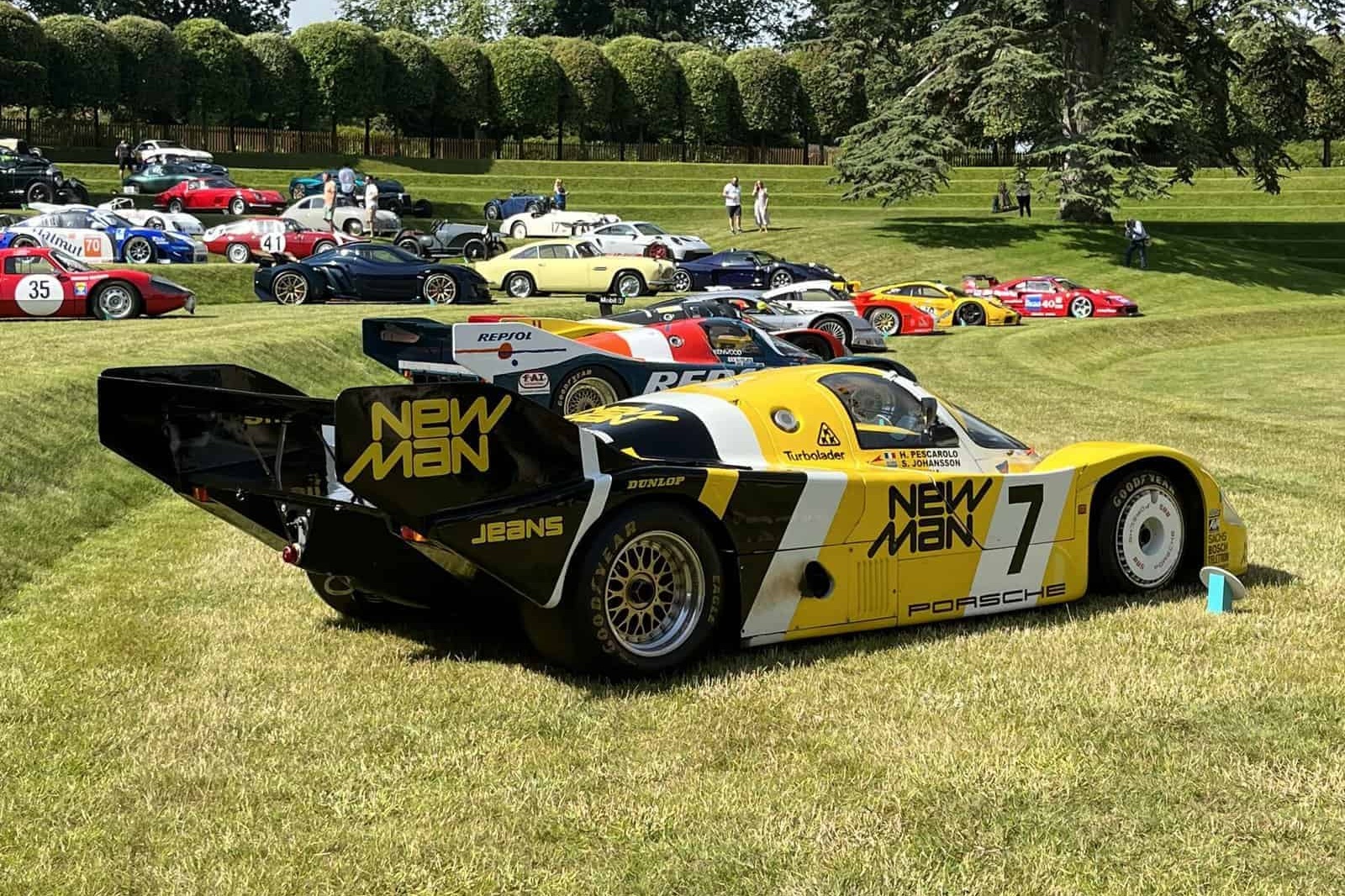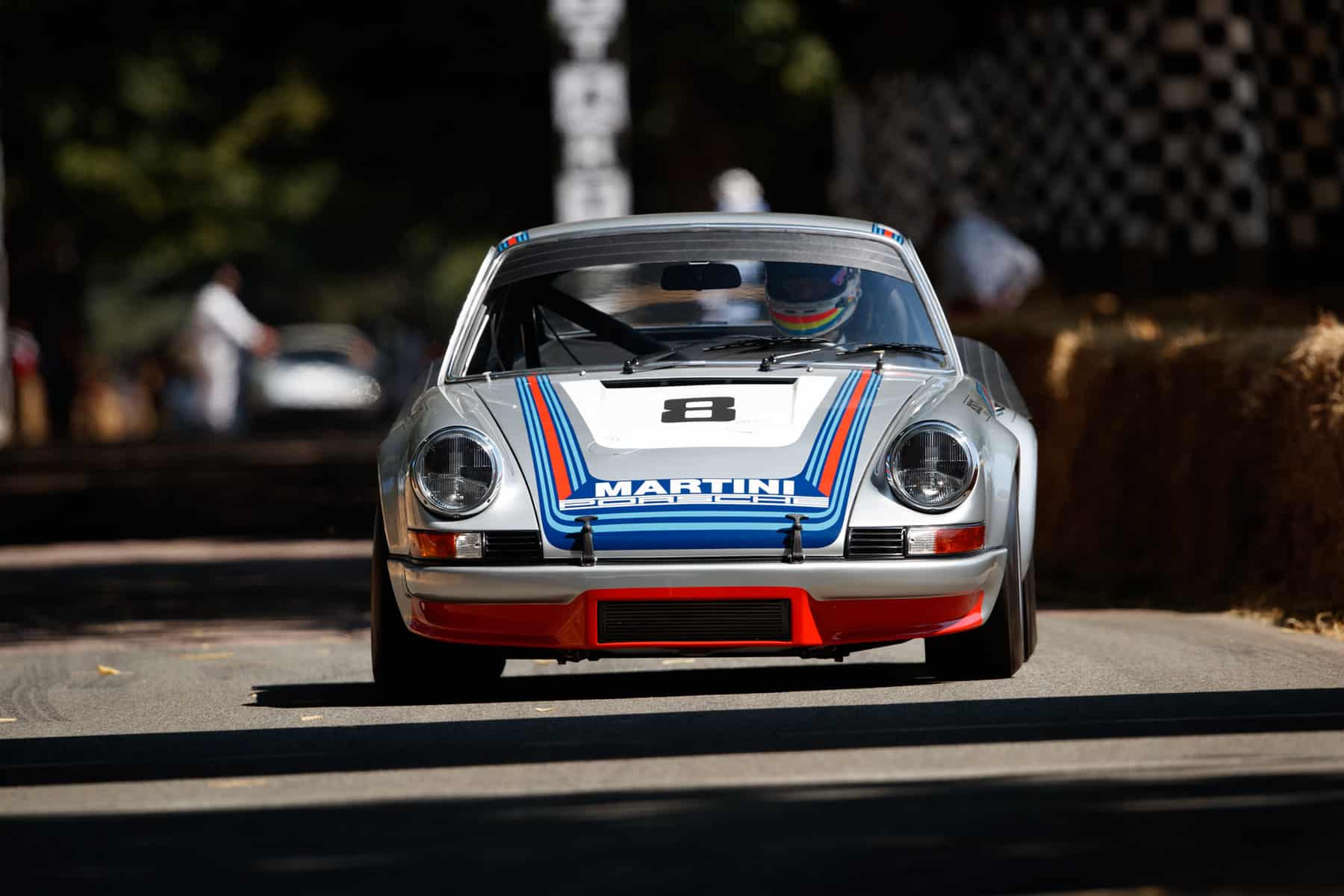The Rise of the 911 Carrera RS
How Porsche decided on a simpler approach
BY: KARL LUDVIGSEN
PHOTOS: CORPORATE ARCHIVES, PORSCHE AG; LUDVIGSEN PARTNERS
After his ascension to the leadership of Porsche in March 1972, Ernst Fuhrmann gave great impetus to a race-prepared version of the 911. Both Fuhrmann and his supervisory board saw a need to de-escalate the cost and complexity of Porsche’s racing effort from the astronomical heights reached with the turbocharged 917s.
“That was a very interesting adventure,” he said of the costly Can-Am campaign, “but one cannot constantly play on so many pianos. Now we are going to stay closer to production cars.”
“One of the first things Dr. Fuhrmann decided,” Norbert Singer recalled, “was that we could not afford to continue an expensive racing program. Therefore, we would concentrate on developing the 911 for racing.” Ernst Fuhrmann had an additional reason for supporting a GT racing version of the 911. He knew the 911 still had years to go as a mainstay of the Porsche car line. He was confident that a strong image in racing would help maintain its sales.
In May of 1972 serious work began on the development of the 911 as a Group 4 Special Grand Touring car. Its homologation by the FIA would require the production of five hundred identical cars in a twelve-month period. The first signs of this new thrust were visible at the Österreichring on June 25. There, in the international 1,000-kilometer race, a 911 coupe was entered for rally expert Björn Waldegaard and Günther Steckkönig. A Porsche experimental engineer who had been with the firm since 1953, Steckkönig had taken the initiative in the preparation of this car and, as an amateur racer since 1966, also shared its wheel.
The Porsche driven by these men was so extensively modified that it had to run as a Group 5 Prototype. It had wider rims and tires, aerodynamic changes to increase downforce, the Teldix antilock braking system, and a special 2.7-liter engine. In the race it finished tenth, headed only by open two-seater racing cars, showing that changes like these could make quite a competitor of the 911 coupe.
Based on these and other experiments, components were chosen for a racing-type 911 to be built in series. Engineer Norbert Singer, who was put in charge of the project, faced two main challenges in planning this car. One was to determine exactly what the 911 needed in order to be more competitive as a GT racer. The other was to find out which changes had to be incorporated in the production car, of which five hundred had to be made, and to which other alterations could be added later under the Group 4 regulations.
These were activities in which the genial and ingenious Singer would become an unrivaled expert. Most critical and fundamental, he knew, was the need to build light weight into all the cars. Porsche succeeded in reducing the homologated weight by 210 pounds to 1,985 pounds—an even 900 kilograms.
Sheet steel thinner than standard was used for the main body-skin panels, cut to 0.70 mm from the usual 1.00 to 1.25 mm. Much of the glazing, including the windscreen, was in special thinner, lighter Belgian-made Glaverbel laminated safety glass. The rear deck was of fiberglass, held down by rubber ski clamps. Cars not intended for road use had rear aprons, including the bumper uprights, also fashioned of fiberglass.
The interior was ruthlessly stripped. Gone were sound-damping materials and carpeting, replaced by rubber mats. Rear seats were absent. Door panels were flat and plain, with a pull cord releasing a simple latch and a plastic handle for closing. The clock and the passenger’s sun visor were gone. Seats were simple buckets with thin padding, rolled edges, and a thumbscrew adjustment for back angle. Missing from the Carrera RS were undercoating, door-sill trim, glovebox lid, coat hooks, and gas struts to counterbalance the front deck lid. The horn was a token offering.
Bilstein shock absorbers saved another 7.7 pounds. This was the first time these German-made gas-pressurized shocks had been made standard equipment on a production Porsche. Anti-roll bars were much stiffer, increased from the standard 15 mm to 18 mm in front and 19 mm at the rear.
The width of the Fuchs aluminum rims at the front remained at 6 inches, while the rear rims were widened to 7 inches. This allowed them to carry Pirelli CN36 radials that measured 185/70 x15 in front and 215/60 x15, with an even lower profile, at the rear. With this combination Singer’s tests showed that the Carrera RS could corner at the highest lateral g rate of any production Porsche—0.912. None of the others could break the 0.9 g. barrier.
This combination of wheels and tires marked a breakthrough for Porsche, said Peter Falk: “With the help of Mr. Bott we managed to introduce wheels and tires in different sizes for the front and rear suspensions—this despite opposition from the sales and customer departments.”
To accept their wider rims and tires the rear fenders were modified with a deep bulge. In the light of the FIA’s rules these bulges were of added significance because they widened the base from which two more inches at each side could be tacked on under the provisions of the GT regulations. Track was 54.0 inches at the front and 54.9 inches at the rear.
When viewed from the rear, the Carrera RS was distinguished from other 911s by more than its fender bulges. Jutting from the rear deck was a strange appendage that looked more like the bill of a platypus or a piece of Italian furniture than part of a modern GT car. The odd-looking addition was a spoiler, an aerodynamic device that quickly became the trademark of the new Carreras of the 1970s. In German it was known as the Bürzel, which could best be translated as “ducktail.”
The origins of the Bürzel dated from 1970 when tests on a standard 911 body were made in the big Stuttgart wind tunnel to find out what effects aerodynamic modifications to its basic shape would have on its speed and stability. From this work came the nose spoiler that was introduced on the 1972 911S. Its American patent in the names of body engineers Hermann Burst and Rolf Wiener pointed out that, unlike the added-on front spoiler of the Chevrolet Camaro, Porsche’s design fully integrated the functions of bumper and spoiler. The ducktail completed the ensemble.
Energized by new chief Ernst Fuhrmann’s interest in improving the 911’s competition profile, racing engineer Norbert Singer launched further work on the coupe’s aerodynamics. He assigned the task to Tilman Brodbeck who, said Randy Leffingwell, “was Porsche’s first hire as an aerodynamics graduate. Singer sent him, a couple of mechanics, a designer from Lapine’s staff and a car into the VW wind tunnel.” The principal reason for the tests was to improve this aspect of the standard 911, not specifically for racing.
Initially Porsche engineers tried a boxy bustle on the back of the 911, then experimented with different spoiler heights attached to that bustle. They saw at once that such measures reduced both the drag coefficient and the amount of rear-end lift at the rear of the car. In standard form the body had a lot of rear lift—about 320 pounds at 152 mph—which contributed to instability and high-speed oversteer.
In further tests the bustle was trimmed away and the ducktail was left standing, jutting up to window-sill level from the center of the rear lid. This simple slab of plastic reduced the rear lift at 152 mph to only 93 pounds and dropped the drag coefficient from 0.41 to 0.40, which translated into a slight but measurable improvement in maximum speed.
“The primary effect” of the ducktail, said a Porsche engineer, “derives from the slowing of the airstream speed over the rear portion of the roof. From this braking effect arises, in accord with the Bernouilli principle, an increase in pressure, from whose vertical force component the downforce results.” Credited for the design in its patent, applied for on August 5, 1972, were Hermann Burst and Rolf Wiener in addition to Brodbeck.
Practical tests refined the ducktail’s final shape, wrote Leffingwell: “Peter Falk’s test department ran countless laps to determine its best placement and height. Lapine himself made designs of the entire car. When his styling department presented the first actual car—it was just before production start—Falk was startled.
“‘The Bürzel is too low,’ he exclaimed. ‘Why is it lower than we tested it?’
“‘Because it looks better,’ Lapine told him.”
The final design, avowed Falk, was 15 centimeters lower than they wanted. It met Tony Lapine’s aesthetic standards and as an added benefit allowed full rear visibility. The ducktail’s placement was doubly advantageous in that it raised pressure at the grille, admitting air to the engine room, which in turn increased airflow through the engine compartment and perceptibly decreased oil temperature. An incidental effect was an improvement in airflow over the taillamps, which kept them cleaner than before.
The engine was another distinguishing feature of the Carrera RS. It was larger than 2.5 liters so it could be increased further, as allowed by the FIA rules, to the next class size, which was 3.0 liters. It had the same stroke as the 2.4-liter Porsche sixes, 70.4 mm, but a larger bore, up from 84 to 90 mm. The biggest bore yet used in the 911 engine, this gave the Carrera RS the same bore and stroke as the 5.4-liter twelve used in the 917/10 in 1972. The six’s displacement became half that of the twelve—2,687 cc or, in round numbers, 2.7 liters.
Another technique carried over to the Carrera RS from the 917 was the use of Mahle’s Nikasil process for protecting the bores of its aluminum cylinders. This was used instead of the Biral cylinders of the 911E and 911S or the chrome-plated aluminum bores that had once been popular at Porsche.
The plated Nikasil layer was about as thick as a chrome coating but much tougher, thanks to microscopically small silicon-carbide particles suspended in it. The yellowish-silver Nikasil bore surface needed no special treatment to hold oil, unlike the chrome-plated cylinders, while the 917 experience showed that it gave higher and more consistent power output than chromed cylinders.
Otherwise the Carrera RS engine—officially the Type 911/83—was much like the 911S of 1972 and 1973. It had the same compression ratio, 8.5:1, so it could run on regular fuel, the same Bosch mechanical injection and the same valve sizes and timing. Its DIN output was up 20 hp from that of the 911S to 210 hp at 6,300 rpm. There was still speed above that as the rev limiter was set for 7,300 rpm. Maximum torque was 188 lb-ft at 5,100 rpm. A five-speed transaxle equipped with an oil pump was standard in the Carrera RS.
This was the 911SC or Carrera RS, of which Porsche had to build five hundred in a twelve-month period if it were to justify its existence. The idea of giving it the Carrera name was a stroke of pure genius. It was new to the 1970s generation of Porsche enthusiasts. Not for a decade had it been applied to a car intended as much for the road as for the track.
In the 356 era the “Carrera” name signified power by the Fuhrmann four-cam engine. With the Abarth-built car (Carrera GTL) and then with the 904 (Carrera GTS) the name had been given to increasingly exotic Porsches, culminating in the Carrera 6 (906) of 1966 and 1967. Since then this wonderful name, with its magical blending of foreign romance and racing excitement, had lain dormant at Zuffenhausen. They revived it for just the right car.
Porsche’s stylists excelled in the way they used the name on the car. They were limited to graphic devices, for there would be no trim or metal lettering on the sides of this lightweight 911. First they devised a stripe along each rocker panel, in which a bold depiction of the original Carrera script “floated.” White cars with both blue and red versions of this striping were shown in the original Carrera RS catalogue and early publicity photos of the new model.
By the time a Carrera RS was first shown publicly at the Paris Salon in October, its side striping had improved. It was now a narrower stripe raised above the rocker panel, out of which the Carrera script was “dropped” so it appeared in the same color as the car. This was more subtle and more attractive than the original design. A similar stripe across the rear lid carried the Porsche name while at the base of the ducktail the Carrera RS designation was lettered on the skin.
Who would the Carrera RS buyer be? Would there be enough of them? It was easy enough for Porsche to make five hundred such cars between October 1972 and February 1973 to make good the promised number in time for homologation for the new season. This was granted in advance by the FIA on November 27, 1972, to take effect on 1 March 1973, assuring acceptance by would-be racers, but the peace of mind of Ferry Porsche and Ernst Fuhrmann required that all those cars find buyers.
The sales department in Ludwigsburg, headed by Lars Schmidt, raised doubts and objections. Sales executives warned that it would be very hard to find buyers for all these cars, especially because the new engine was not approved for sale in the United States in 1973. Porsche could not count rely on its biggest market.
To help sales the price was held to DM33,000 (about $10,300), only DM1,500 more than the 911S. That was for the basic stripped car, which was order number M471. If he specified order number M472 and paid an extra DM2,500, the buyer had a Carrera RS with the Touring package. This gave him a completely upholstered and trimmed interior like that of a 911S and functional steel rear bumpers and guards. Such cars, Porsche said, were trimmed that way by its dealers so as not to jeopardize the homologation of the five hundred lightweights. Those cars had to leave the production line in stripped form.
Porsche had to vault another hurdle to make the Carrera RS as appealing to the sporting road driver as it was sure to be to the racer. The West German national motor-vehicle authority refused to give the new type a blanket approval for use on the road. This, the Porsche men finally pried out of the reluctant bureaucrats, was owed to a conflict between the ducktail and their interpretation of Paragraphs 32 and 33 of the road regulations, which dealt with the need to avoid sharp edges and corners on vehicles.
Porsche decided to bypass the head office of the motor-vehicle authority in Flensburg by having each Carrera RS individually type-approved for its road license by the local office in Stuttgart. This was permissible as long as no more than one thousand identical vehicles were processed through the same office. There seemed no danger of that number being exceeded with the Carrera RS.
As part of this procedure “the first 500 cars were all assembled as Lightweights,” wrote Randy Leffingwell. “When each car reached point eight on the assembly line, with all necessary pieces in the car so it would function fully but not yet ready for customer delivery, it was taken to the Zuffenhausen town scale. There each car was weighed and certified. The cars then were returned to the factory and split off either for final inspection or returned to assembly to fit the customer options.”
In September 1972, with only the first prototypes and photos to work with, the salesmen of the VW-Porsche VG went to work to get commitments from their distributors. They scheduled an extra-heavy barrage of ads. Even the Zuffenhauseners, who were normally divorced from sales concerns, got into the act. Every member of management who was entitled to a top-rank car was obliged to take a Carrera. Staff people knocked on the doors of potential 911S buyers to convert them to the new RS.
By the time the Paris Salon opened on October 5, a total of fifty-one orders for the Carrera RS had been booked. That was an unexpectedly good start. The Salon brought an even bigger surprise. There was such enthusiasm for the car that the complete run of five hundred was sold out a week after the show closed! Porsche had completely underestimated the popular appeal of its new-style Carrera.
The salesmen who had pushed so hard to sell the cars now had to switch to assuaging the hurt feelings of would-be Carrera RS buyers who had learned they were facing an indefinite wait. Their orders held up, so over the winter Porsche decided to build a second series of five hundred cars. Understandably it also took that opportunity to bump the price up an additional DM1,000.
On April 9, 1973, the one-thousandth Carrera RS was completed, which conferred an additional benefit—it could now be homologated in the Group 3 Grand Touring category, in which it would run with relatively little modification and would be highly competitive. On July 1, 1973, that additional homologation was granted.
The Carrera RS production line kept rolling until July 1973 when the last of 1,580 such cars was made, 1,308 of them being Touring versions and 200 Sport models. At this rate it was no longer possible to sneak them through the Stuttgart motor-vehicle office for registration, so Porsche obtained national approval of the Carrera RS without its controversial rear ducktail. Many were sold in that condition but few stayed tailless long. Owners could and did buy the Carrera decklid from their dealer for $185, installed it and had their local inspection office approve it.
This new Porsche struck a responsive chord in the minds of many enthusiasts. One who saw in it just the right car for his purposes, “a run in the Salzburg mountains at six in the morning,” was famed conductor and fast-car fan Herbert von Karajan. He ordered a red RS with black striping. Another enthusiast group, the editors of Autocar, headlined their test of the Carrera RS “Sensational, even by Porsche standards.”
Autocar tested a Carrera with its full touring equipment. It scaled 2,398 pounds with a half-full fuel tank, quite a bit more than the 2,150 pounds in the same condition that was typical of the RS in its basic stripped form. Front/rear weight distribution was 41/59 percent.
The car’s heft did not keep the Autocar car from returning such brilliant acceleration figures as rest to 60 in 5.5 seconds, to 100 mph in 15.0, and the standing quarter-mile in 14.1 seconds. Its top speed was 149 mph. Testing one of the lighter homologation specials, Paul Frère recorded the same time to 60 mph, two seconds less to 100, and a 150-mph maximum speed.
Porsche had done its job. Now it was up to the racers.

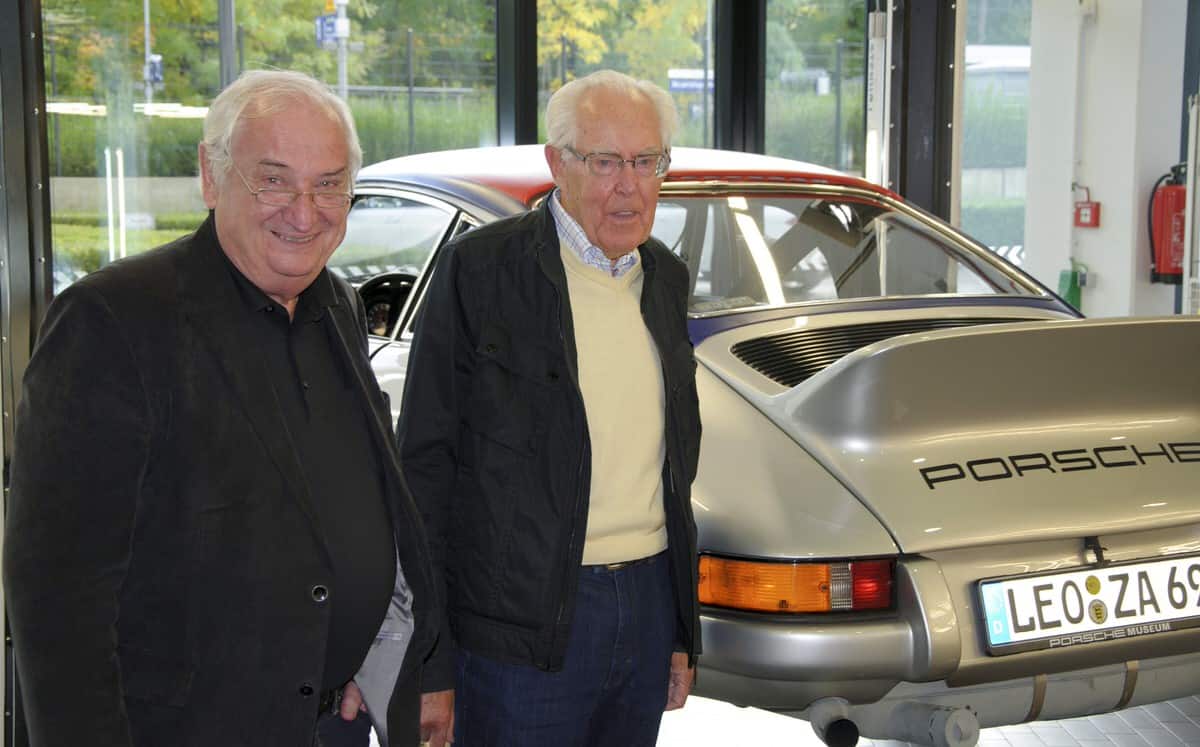
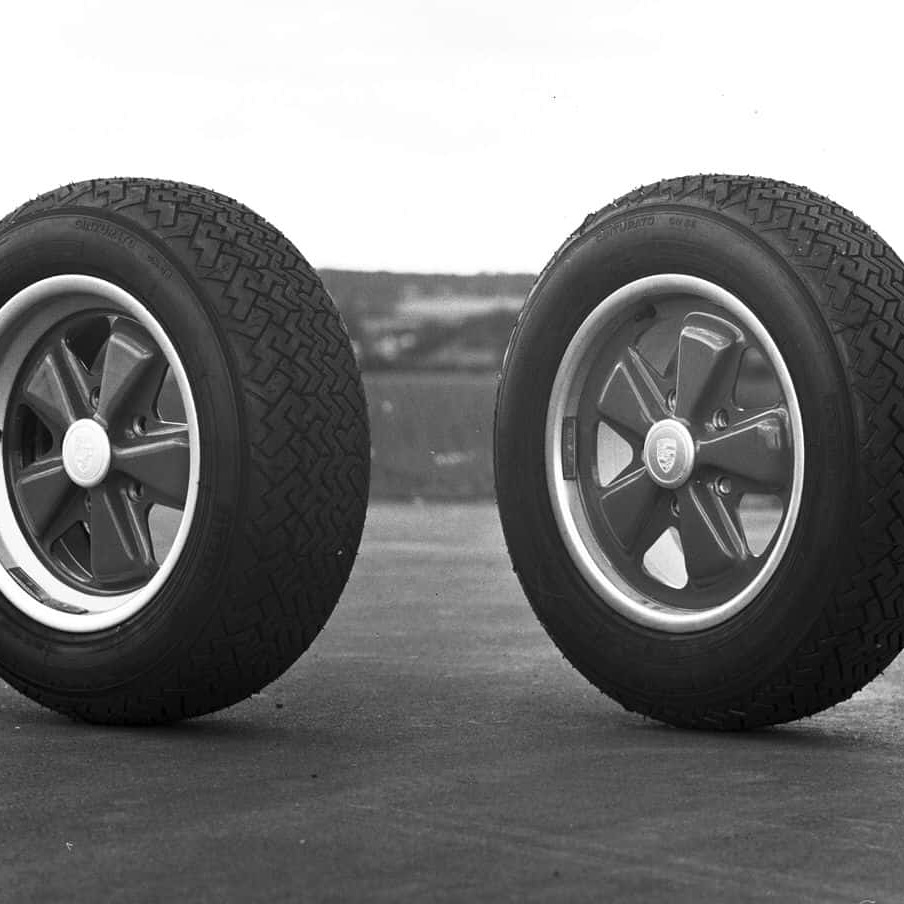
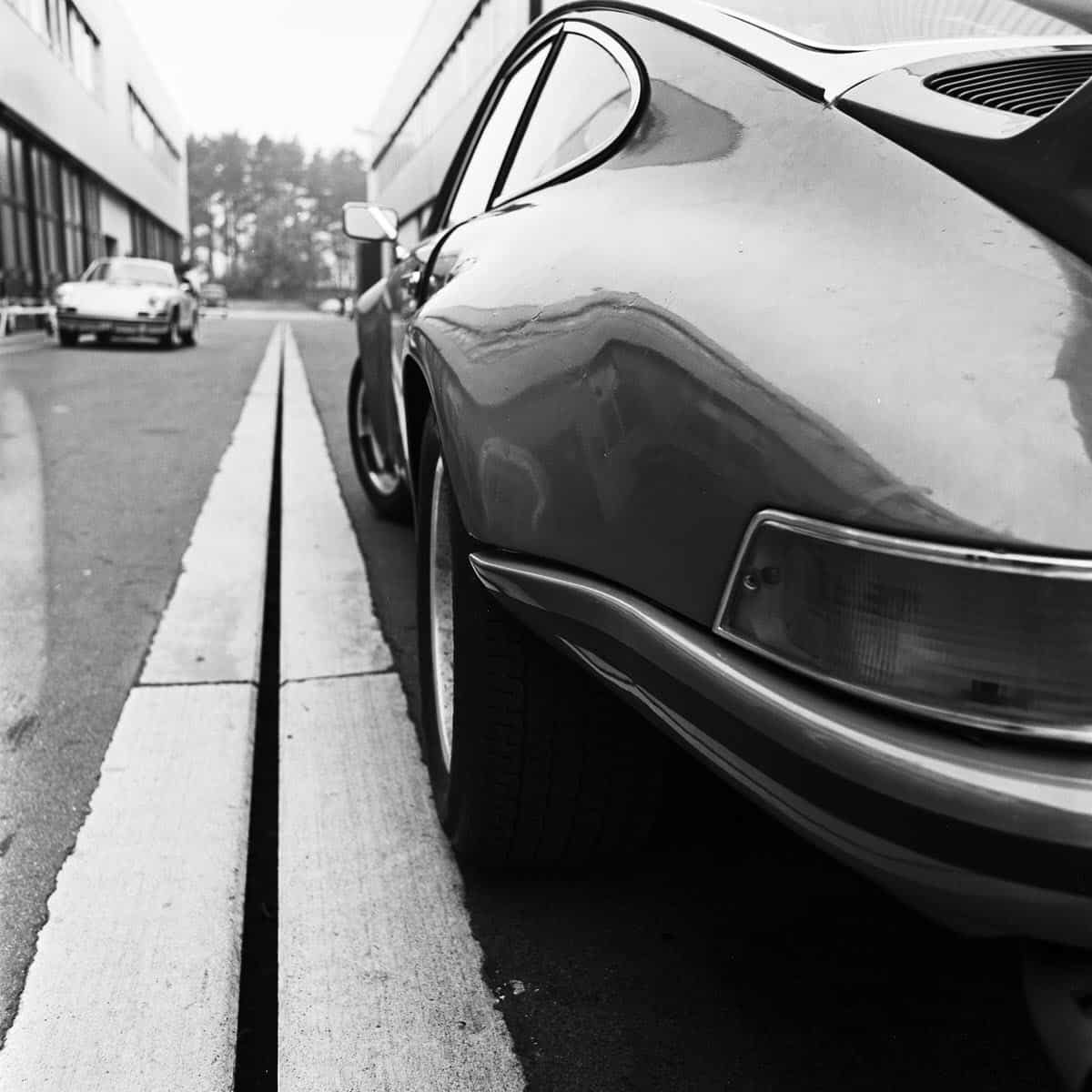


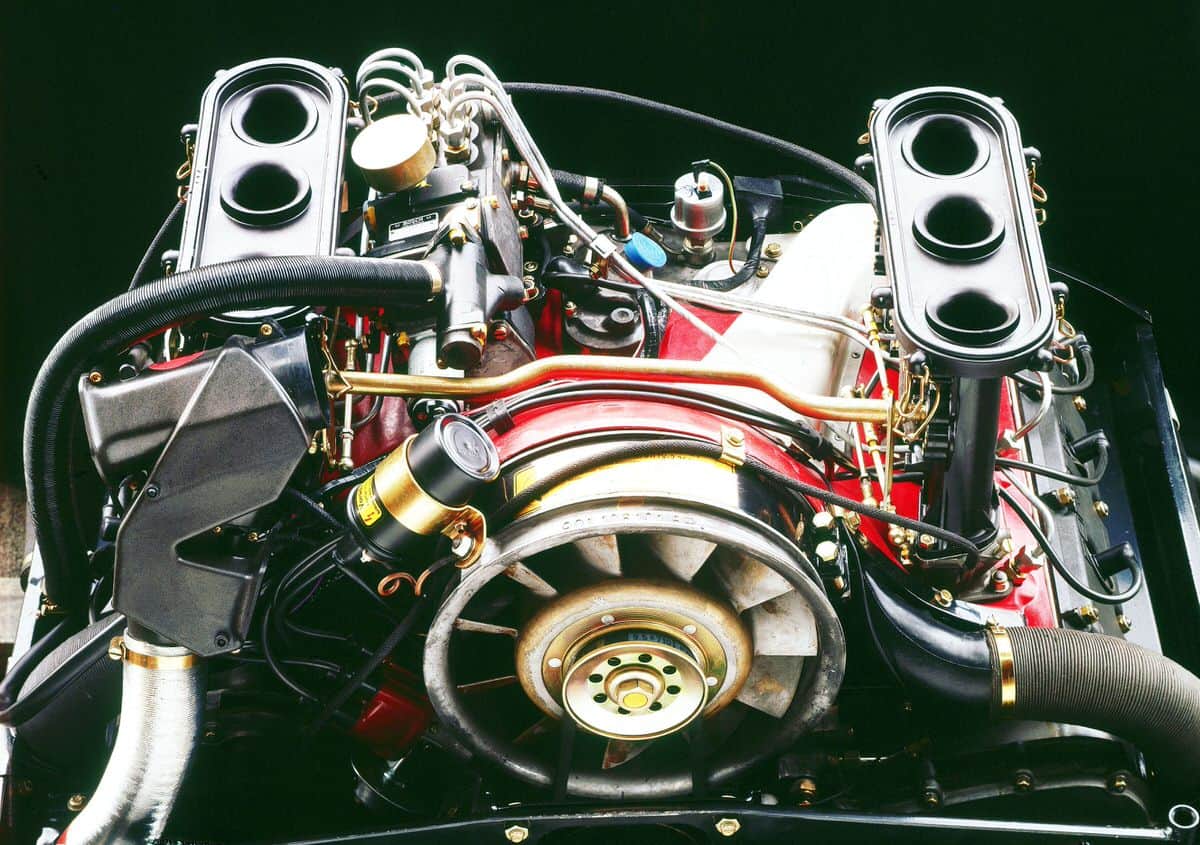
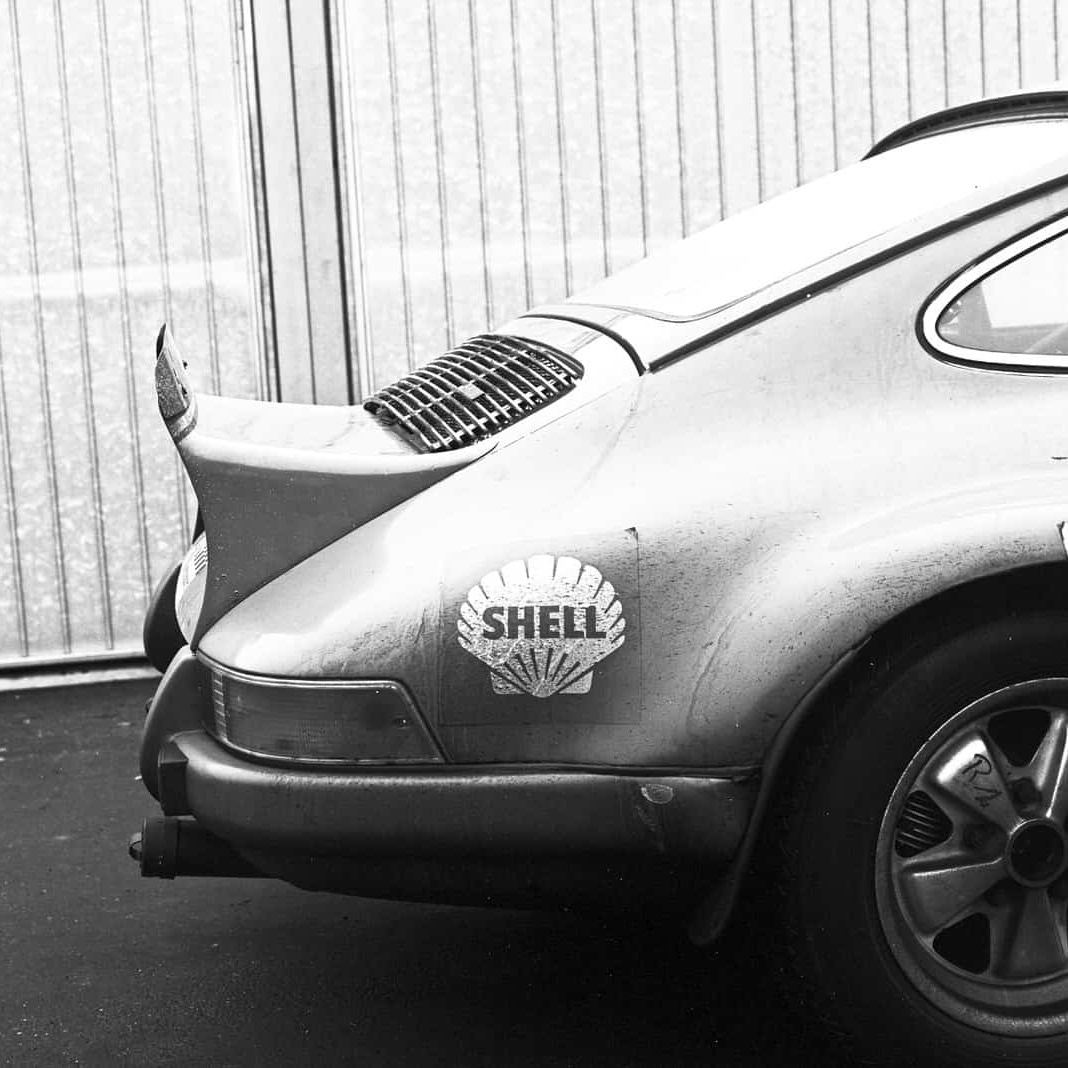


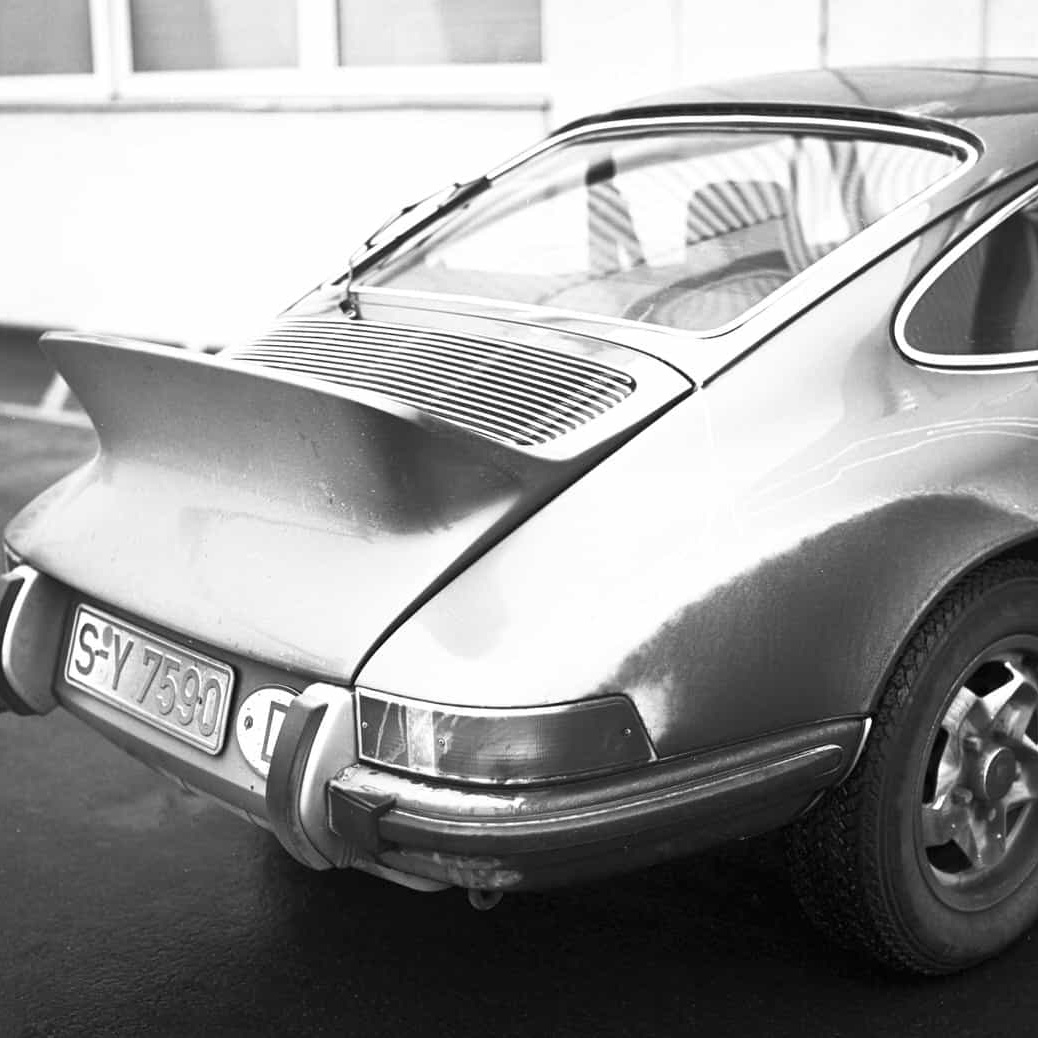
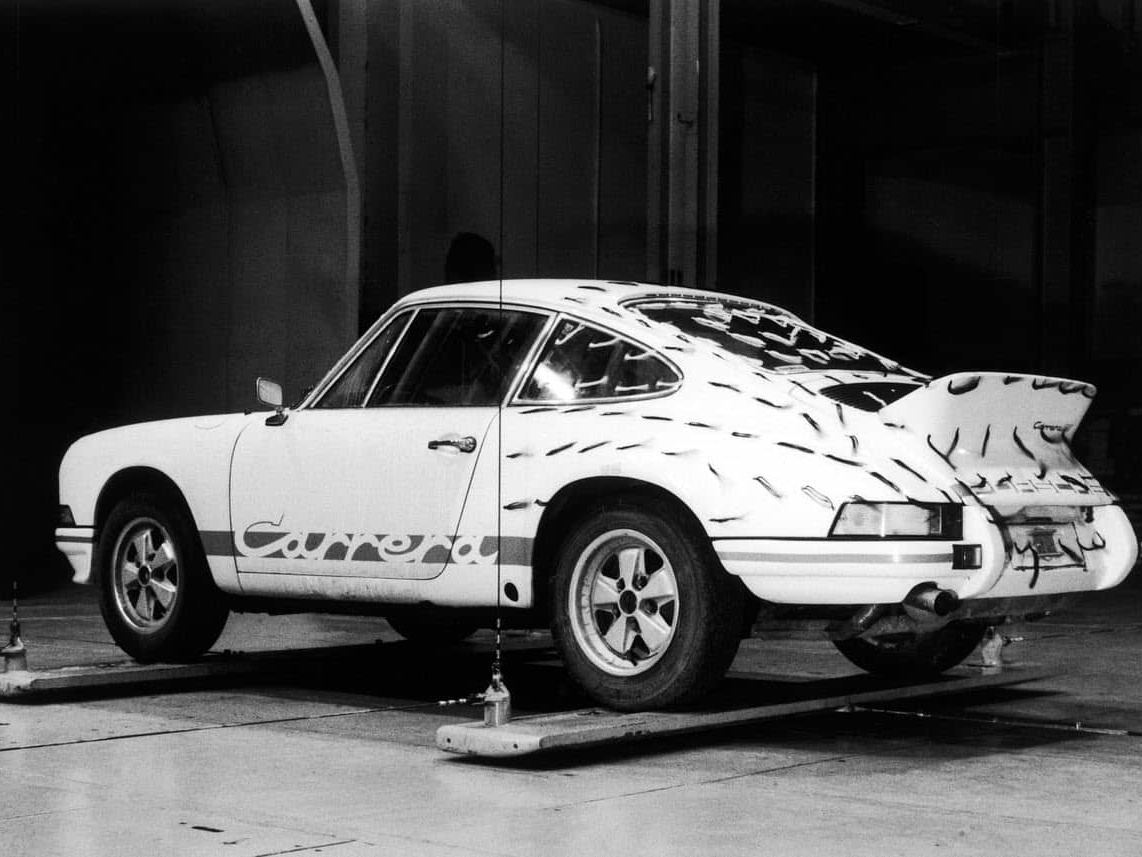
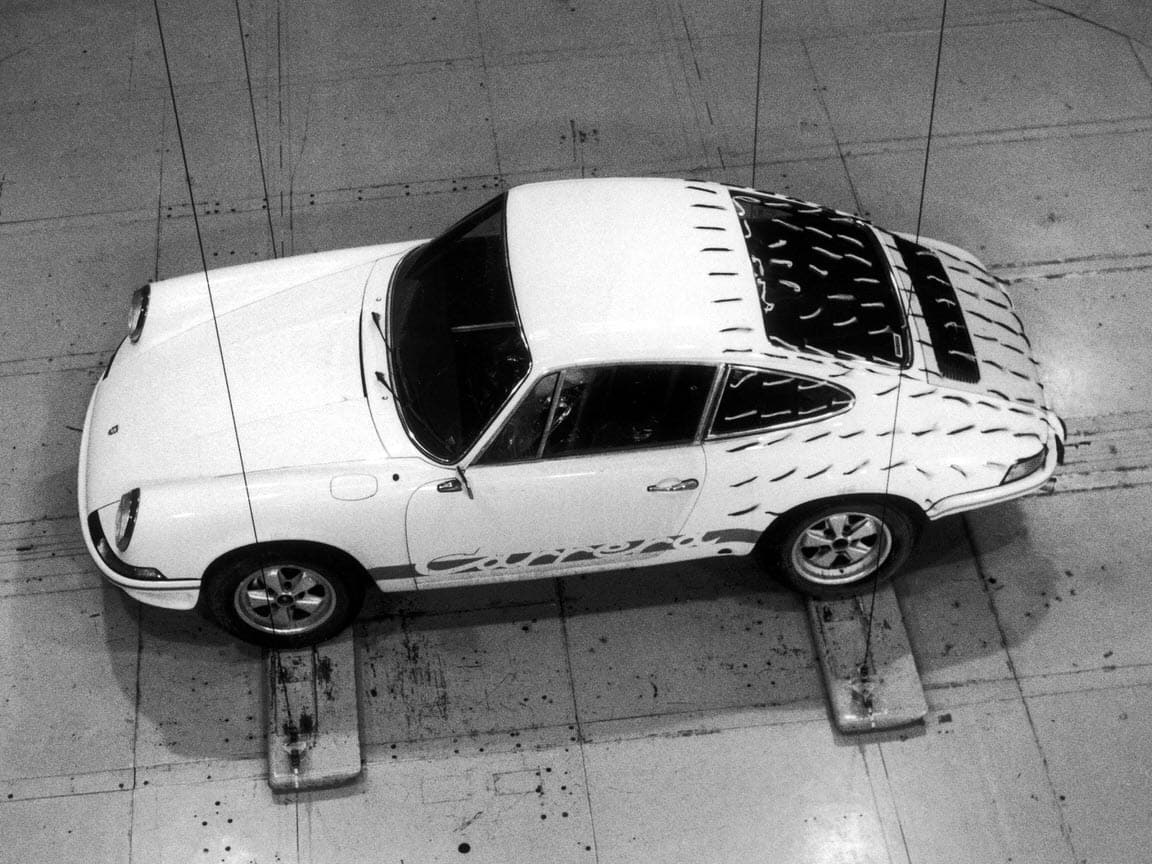

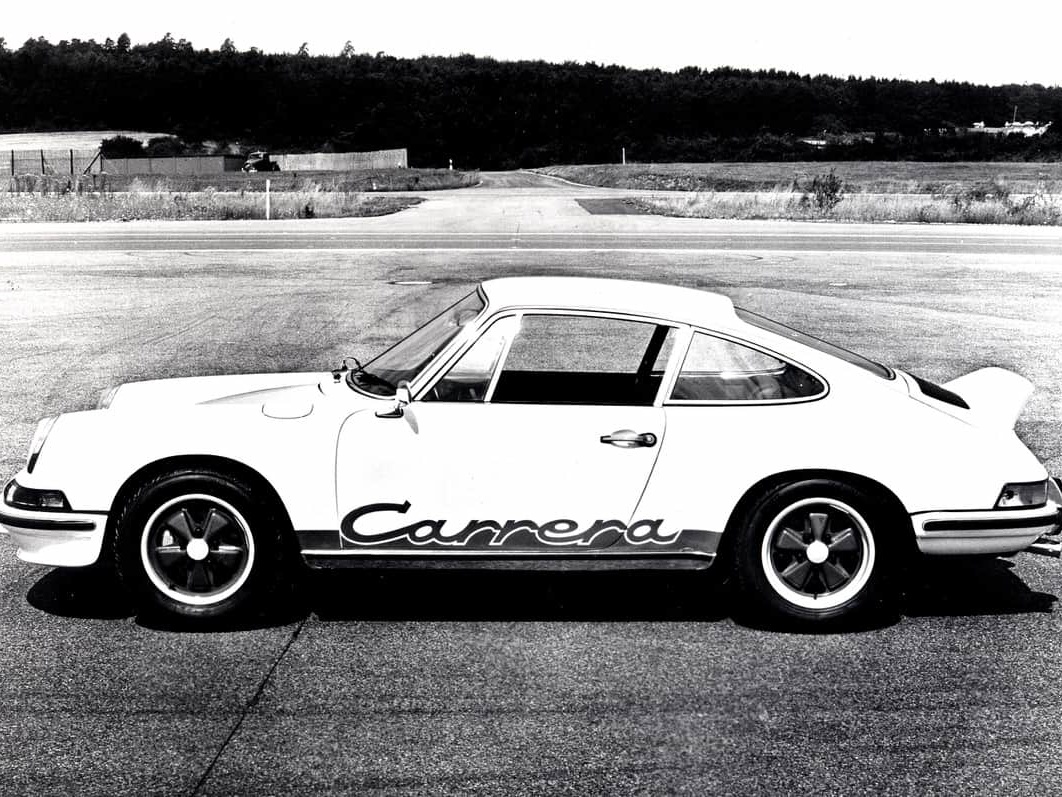
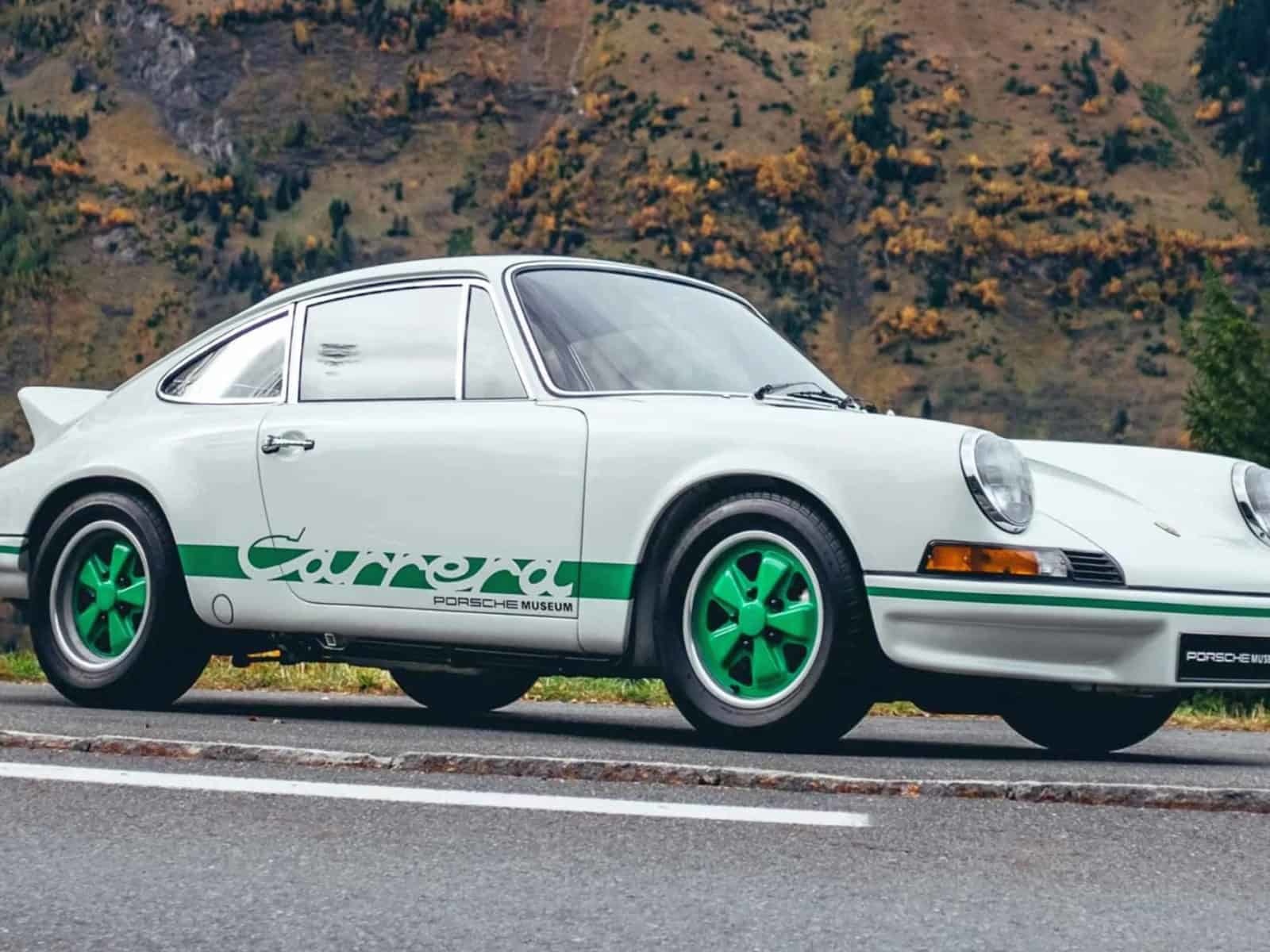
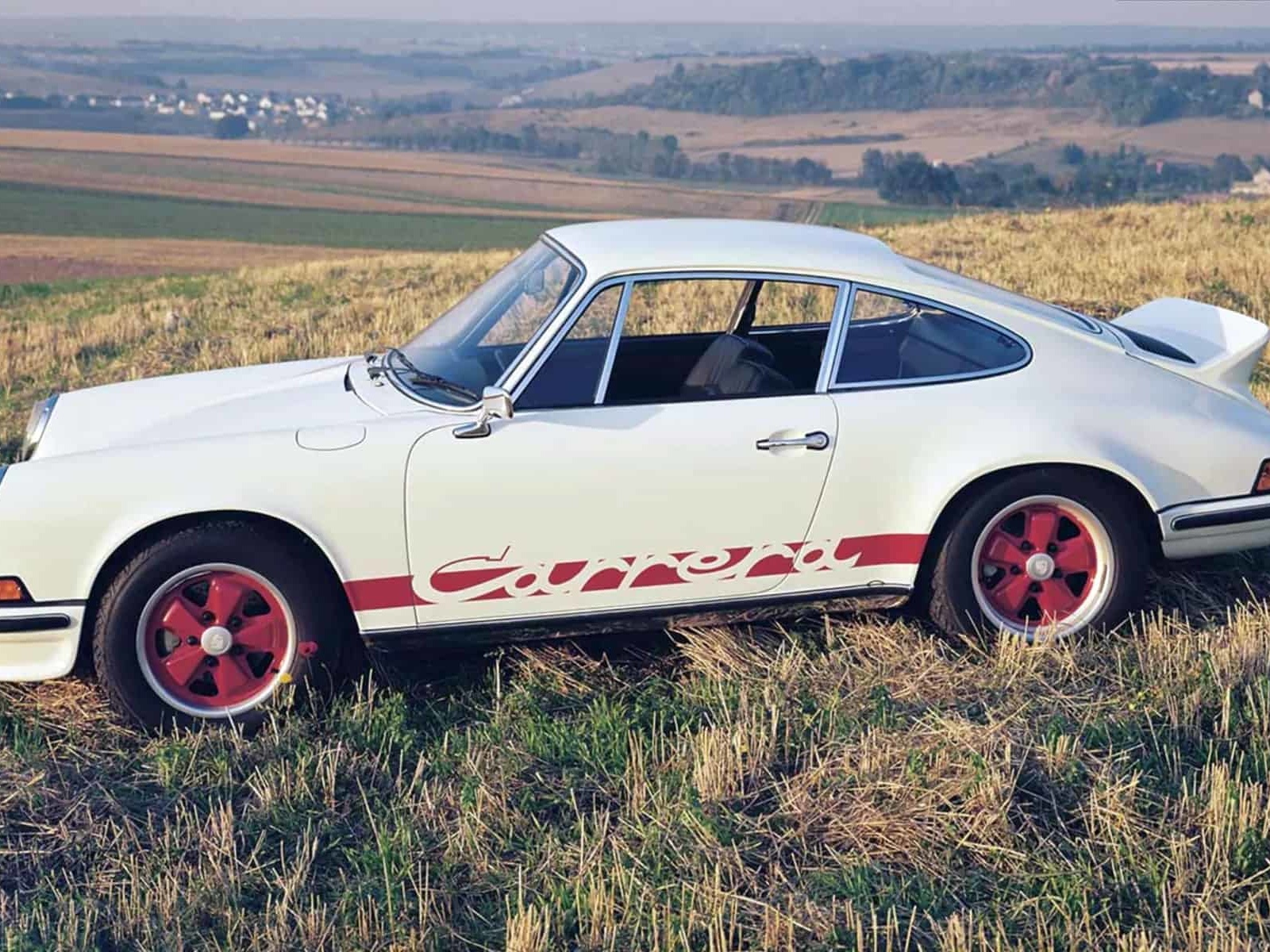
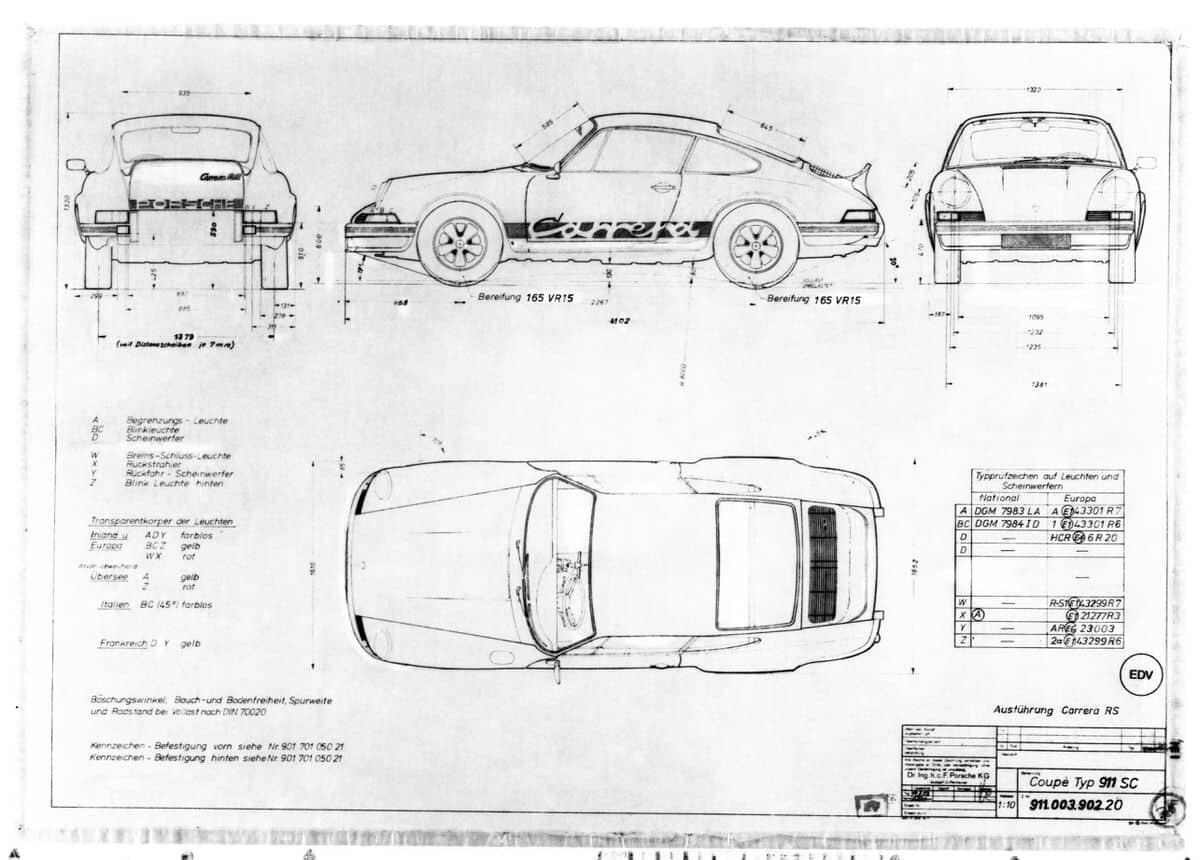
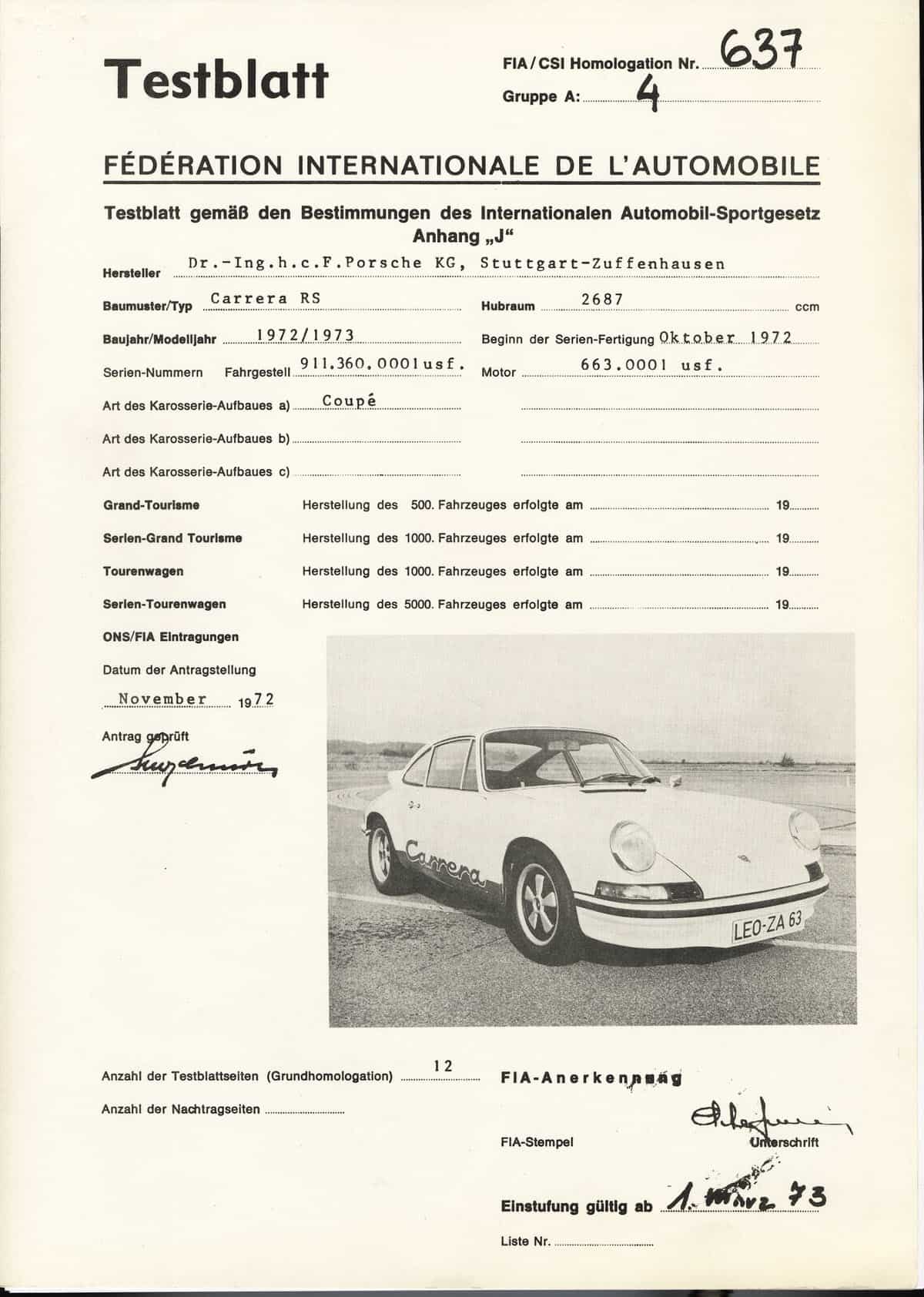
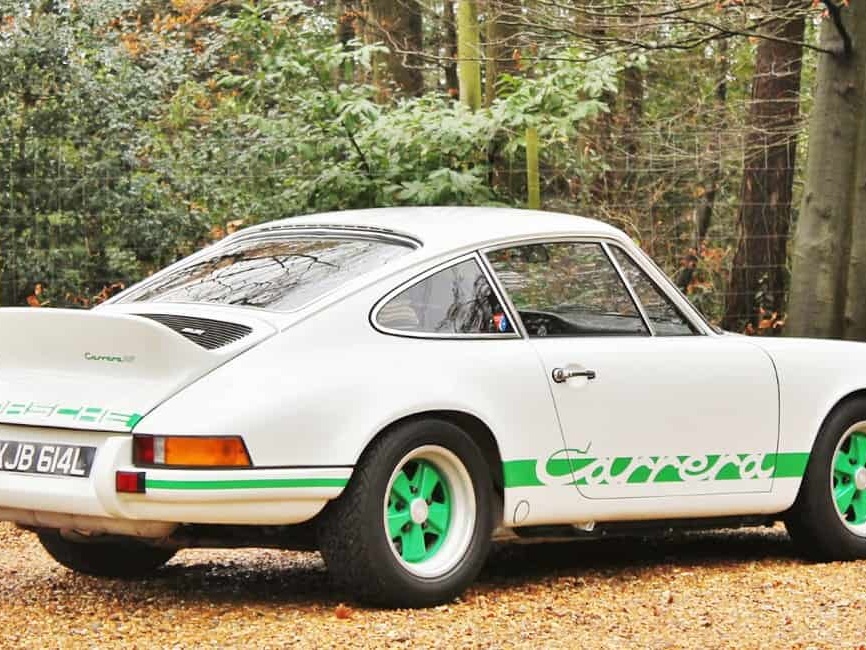
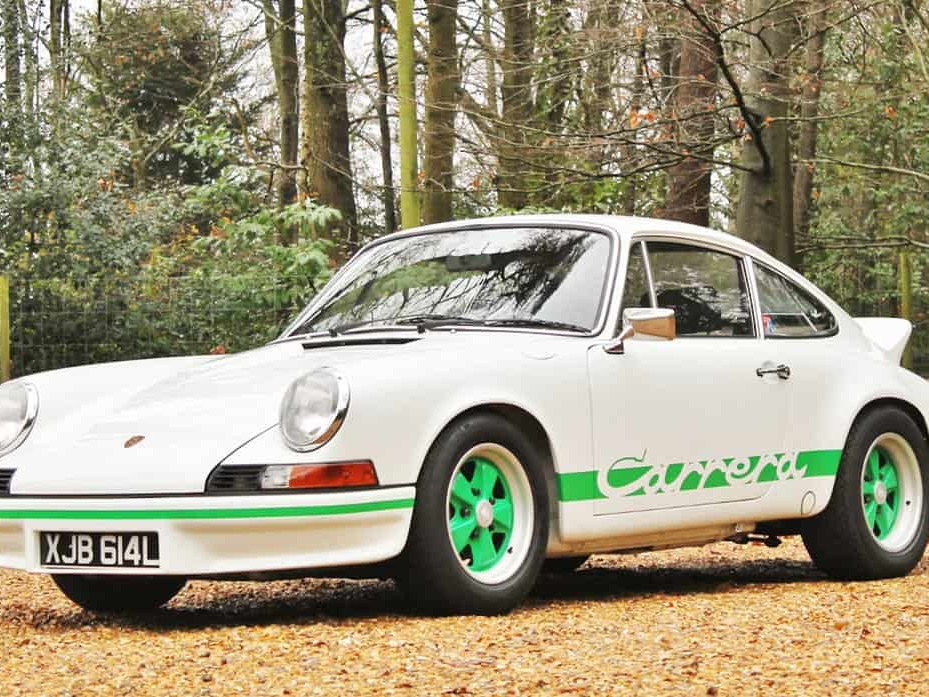



![alfa gtz perfectly imperfect webannerl[1]](https://automedia.revsinstitute.org/wp-content/uploads/2024/08/Alfa-GTZ-Perfectly-Imperfect-webannerl1-uai-1200x800.jpg)
